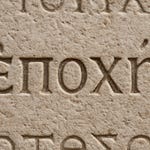There are many photographs of Rudolph Valentino with pen in hand. Unlike the countless staged publicity stills, these quieter images are genuine—because he did write. He wrote a great deal. Not only letters, which he composed prolifically to manage his personal life and career, but also psychic writings—trance-like automatic texts he believed came from the other side.
Yet when it came to writing his official autobiography, Valentino turned to someone else. He chose the well-connected Spanish journalist Baltasar Cué, a respected figure in Hollywood's international press circle. Cué translated scripts, wrote for European film magazines, and knew the terrain. In choosing Cué, Valentino was strategic. In the spring of 1926, work began on what he hoped would finally be his story, told on his terms.
Valentino had good reason to want this. He had been mercilessly misrepresented by studio marketing. The myth of the “Latin Lover” was lucrative—but the man behind it was lost. And that truth mattered to him.
Cué later recalled:
“We saw each other frequently during the final weeks of his last work… after lunch, after dinner, while sitting in his office, while he was retouching his makeup or changing the Arab dress in front of the glowing dressing table… we used to discuss various phases of the project.”
At one point, Valentino called for his secretary and asked her to give Cué the only copy he had of a previously published piece—an article titled My Life Story, widely accepted as his autobiography. Margaret Neff handed it over, along with other documents Valentino described as “precious jewels or ancient parchments.”
Cué explained:
“He made a huge qualification about the quality of the content… He wanted to be sure to emphasize to me that this was a story reputed to be his autobiography… Valentino knew very well these events never happened.”
In his final months, Rudolph Valentino was attempting something radical: to unburden himself, to tell the truth. No studio spin. No Hollywood embroidery. Just Valentino—in his own voice.
He didn’t live long enough to finish. But Cué had both his testimony and the documents. He salvaged what he could and published the fragments a year later in Cine Mundial, under the title The True Rudolph Valentino. What remains is incomplete—a silhouette of what might have been the one document capable of freeing him from the myth he never authored.
I have often wondered: how far would he have gone in telling his truth? Would he have revealed what we now know? Would he have confirmed secrets that were, at the time, still buried? And more to the point—would the moguls who profited from his image have ever allowed it?
I doubt it.
Because myth-making, for all its glamour, is often just a prettier word for silencing.
In The True Rudolph Valentino, Cué reflects on Hollywood’s relationship with truth:
“Each paragraph film companies publish as advertising… must be written according to longstanding rules… If what is convenient to disclose is not within the field of truthfulness, it is created within the field of invention. If the truth is inconvenient, it is best to say nothing.”
In this way, Valentino became the property of people who never knew him—cast as someone he was not. The facts of his life were twisted, scrubbed, and sanitized to safeguard his monetary value. And this continues today. His story is still retold as fantasy—repeated and preached as gospel, with little regard for the truth we uncovered in the documents.
In the years I’ve spent documenting Valentino—not the myth, but the man—I’ve felt the full weight of that silencing. The effort to suppress, discredit, distort. The moment you touch truth someone powerful wants buried, you find yourself at war.
I began as a researcher. But because I found things I wasn’t supposed to find—and published them—I became the antagonist in someone else’s script.
This week, a new chapter in that work begins.
The truth about Rudolph Valentino is preserved in those “precious jewels and ancient parchments” preserved by Cué—and in the documents we discovered decades later. Valentino knew his truth was buried in those papers. Today, once again, the documents speak.
After years of fighting to preserve what others tried to erase, I have launched an online archive:
Rudolph Valentino’s True History in Documents
Here, primary source material is now publicly accessible—court records, contracts, letters, ledgers—all watermarked and restored, many for the first time since they vanished into private hands.
These are not re-tellings. Not fan recollections. These are the documents. They may not feature splashy photos of Valentino, but they tell a very different story.
There are two Valentinos: the one who performed, and the one who tried to speak.
He didn’t get to write his autobiography.
But the archive still breathes.
My late husband Renato translated Cué’s The True Rudolph Valentino into English. Cué did not have access to the documents we would later discover, and had only a partial view of Valentino’s story. But he preserved what he could, and with Renato’s translation, that truth has reached new eyes.
Available on Amazon
We will never know how deep into his truth Valentino would have been allowed to go. But I believe we’ve brought his truth into reality—and we’ve done it with documents.
Like Valentino, I began with the simple goal of telling the truth.
And like him, I was warned: truth is dangerous work when the record is sacred to some.
But I keep going.
Onward!












Share this post